Discover the hidden gem of Central and Eastern Europe: Budapest! Nicknamed "the Paris of the East," this city boasts breathtaking architecture and a rich history, but don't be fooled by its cultured exterior. Behind the grandeur lies a funky, eclectic vibe that shines through in its quirky storefronts, imaginative restaurants, and lively nightlife.
So, what side of town will you call home? Buda and Pest are two unique parts of the Hungarian capital that offer different experiences. Buda is located on the western bank of the Danube and is characterized by its hills and elevated river terraces. This is the older, more historic part of the city and is home to iconic landmarks like Buda Castle, Fisherman's Bastion, and the Matthias Church.
On the other hand, Pest is located on the flat and featureless sand plain and is the larger, more modern part of town. You'll find structures like the Hungarian Parliament Building and St. Stephen's Basilica here. It's easy to explore both sides of the city, thanks to the several bridges spanning the Danube River.
Below, we'll tell you everything you need to know to plan a fantastic stay in Budapest, Hungary.
Best Time To Visit Budapest
The peak tourist season in Budapest is from June to August. The weather is pleasantly warm, but it can reach triple digits and have a long waiting time, and the prices are high.
Thankfully, with Budapest's long summer season from May through September, you can still enjoy Budapest during the shoulder seasons. Try to visit Budapest between April and May or September and October. Temperatures are in the 60s, prices are lower, and there aren't as many crowds.
The weather in the winter isn't pleasant. There is lots of rain and snow, and many tourist attractions shut down for the season. However, there are fantastic outdoor "old world" Christmas markets held in November and December!
Top Attractions
Castle Hill
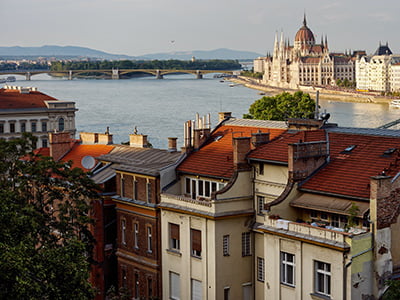
The Buda Castle Quarter is one of the oldest parts of Budapest, and there are many amazing attractions here. You'll find Matthias Church - a beautiful Gothic church used for the coronation of Hungarian kings. Nearby is the Fisherman's Bastion, which offers fantastic views of the entire city. Finally, there's Buda Castle (or the Royal Palace). Built in the 13th century but significantly damaged during the Turkish occupation, the now reconstructed Buda Castle houses the Hungarian National Gallery and Budapest History Museum.
Hungarian Parliament Building
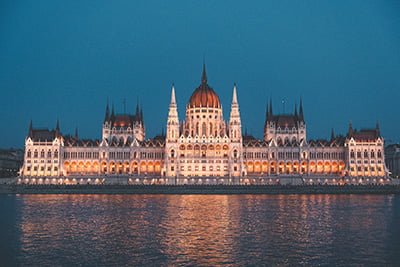
The Parliament building is the largest building in the country and is absolutely stunning. Built-in 1902 in the Gothic Revival style, it is a mammoth of architecture. Tours are popular, so book your tickets well in advance!
Hungarian National Museum
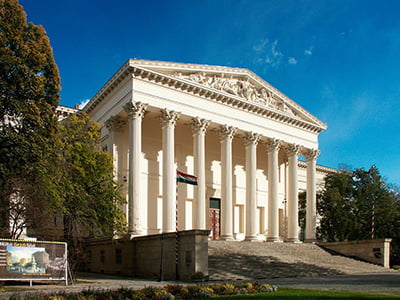
This fascinating art, history, and archaeology museum were founded in 1802. Originally a library, the museum now houses multiple displays, with artifacts dating back to 804 AD!
Stephen's Basilica
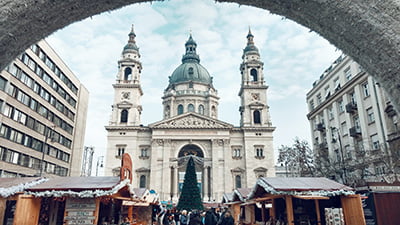
The biggest church in Hungary houses a relic of Hungary's first Christian king, Stephen I. You can explore the church on your own or enjoy a guided tour.
Shoes On The Danube Bank

You can spend a whole day exploring City Park! Here, you'll find Heroes' Square, the Museum of Fine Arts, a beautiful botanical garden, the fairy-tale-style Vajdahunyad Castle, and a spacious public ice skating rink (in winter, anyway!). There are many pleasant restaurants edging this historical site.
City Park
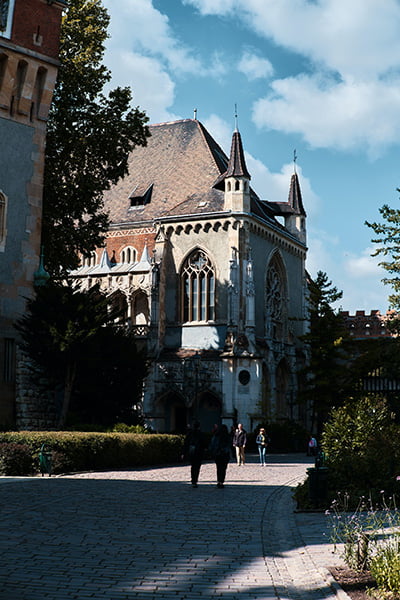
You can spend a whole day exploring City Park! Here, you'll find Heroes' Square, the Museum of Fine Arts, a beautiful botanical garden, the fairy-tale-style Vajdahunyad Castle, and a spacious public ice skating rink (in winter, anyway!). There are many pleasant restaurants edging this historical site.
Dohany Street Synagogue
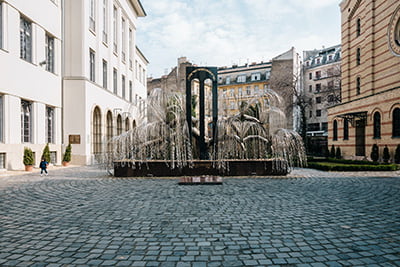
This is the biggest Jewish synagogue in Europe and showcases a mixture of Byzantine, Gothic, and Romantic styles. Inside are the Heroes' Temple, the Jewish Museum, a graveyard, and a memorial site. Like most religious tourist attractions, you can explore on your own or enjoy a guided tour.
Margaret Island
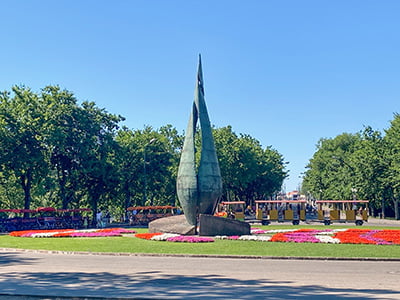
Right in the middle of the Danube is Margaret Island. It used to be a royal hunting reserve, but it's not a public park with many attractions! There's a Japanese garden, a rose garden, a small zoo, monastic ruins, and thermal baths. And it's completely free to explore!
House of Terror
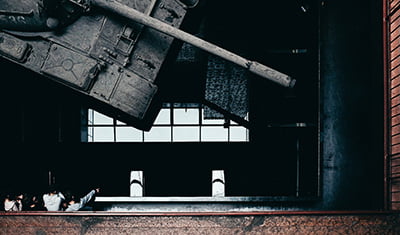
The House of Terror museum is housed in the building that served as the headquarters for both Hungarian Nazi and Communist organizations. Exhibits recount the history of these groups during World War II.
The Budapest Town Hall
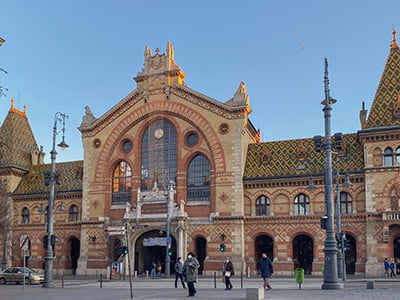
The Budapest Town Hall is one of the city's most iconic landmarks and is known for its ornate neo-Gothic architecture. It is a stunning gem located in the heart of the city. The Town Hall was built in the late 19th century and was used as the administrative center of Budapest for many years. It was also the site of important political events and symbolized the city's political power and cultural heritage. The building features intricate carvings, stained glass windows, and towers that are typical of the neo-Gothic style. Today, the Budapest Town Hall is open to the public and serves as a popular tourist attraction, offering visitors a glimpse into the city's rich history and culture.
Capital Bridges
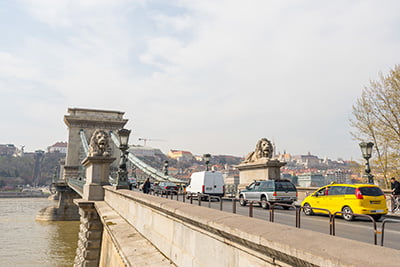
Széchenyi Chain Bridge: This is the first permanent bridge built across the Danube River and is considered one of Budapest's symbols. It was completed in 1849 and is named after István Széchenyi, a Hungarian statesman and philanthropist.
Margaret Bridge: This is the second oldest bridge in Budapest and is located near Margaret Island. It was completed in 1901 and was named after Saint Margaret of Hungary.
Árpád Bridge: This bridge was completed in 1950 and is the southernmost bridge in Budapest. It is named after Grand Prince Árpád, the leader of the Magyars in the 9th century.
Megyeri Bridge: This cable-stayed bridge was completed in 2008 and is the newest of the eight bridges in Budapest. It provides a connection between Buda and Pest on the M0 motorway.
Petőfi Bridge: This suspension bridge was completed in 1937 and named after Hungarian poet Sándor Petőfi.
Liberty Bridge: This is the third newest bridge in Budapest and was completed in 1896. It is named after the concept of freedom.
Rákóczi Bridge: This bridge is named after Francis II Rákóczi, a Hungarian nobleman and leader of the Rákóczi's War of Independence in the early 18th century. It was completed in 1995.
Lágymányosi Bridge: This bridge is the southernmost bridge in Budapest and provides a connection between Buda and Pest on the M0 motorway. It was completed in 2014.
Citadella
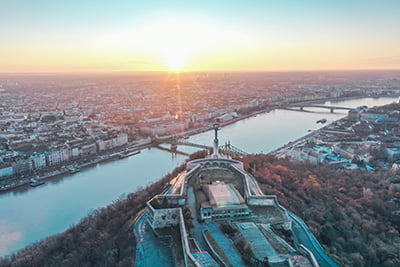
The Citadella is a historical fortification located on Gellért Hill in Budapest, Hungary. This stunning monument offers breathtaking views of the city and the Danube River, making it a must-visit destination for any traveler. The Citadella was built in the mid-19th century and served as a military stronghold during World War II. Today, it is a popular spot for picnics, sunsets, and photography. Visitors can explore the fort's well-preserved ramparts, admire the art installations and sculptures on display, and take in the stunning panoramic views from the top. Whether you're a history buff, a nature lover, or just looking for a breathtaking view, the Citadella is a must-visit destination in Budapest.
Gellért Hill Cave
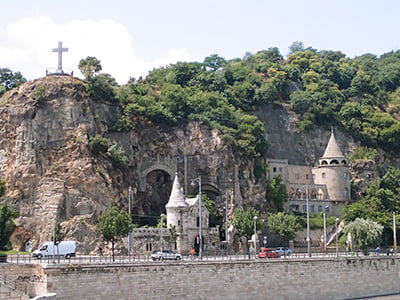
The Gellért Hill Cave is a natural wonder. This stunning cave, located within Gellért Hill, was formed by thermal springs and is a unique geological feature of the city. Here, you can explore the cave's labyrinth of tunnels and admire the intricate formations of stalactites and stalagmites. The cave also serves as a place of pilgrimage for those who come to see the statue of Saint Ivan and pay homage to the hermit who lived in the cave in the Middle Ages.
Things To Do
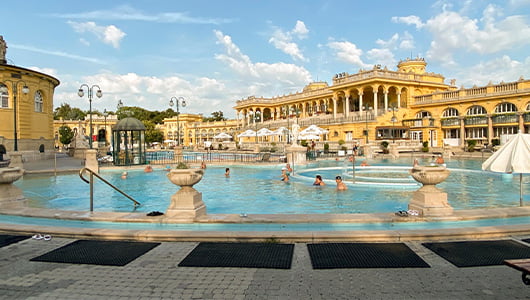
Visit the Baths
Budapest is famous for its thermal baths, and the Szechenyi bath is the most renowned. It is the largest medicinal bath in Europe, with fifteen indoor thermal pools and three outdoor pools. The water in these pools is rich in minerals, and soaking in them is said to be good for arthritis and poor circulation.
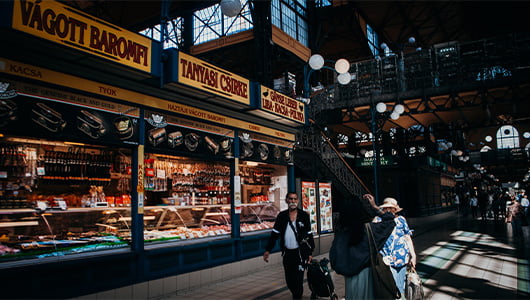
Shop at Great Market Hall
This is the biggest and oldest indoor market in Budapest. Inside a beautiful 19th-century building, the Great Market Hall hosts dozens of food and souvenir stalls and is a fantastic and unique shopping experience.
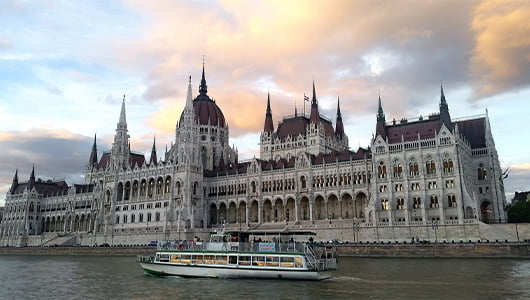
Enjoy A River Cruise
You can't visit central Budapest and not spend some time on the Danube River! A ferry ride or sidewalk stroll will both be enjoyable, but you can also take a proper Danube River cruise, where a guide will point out all of the interesting bits you would otherwise miss.
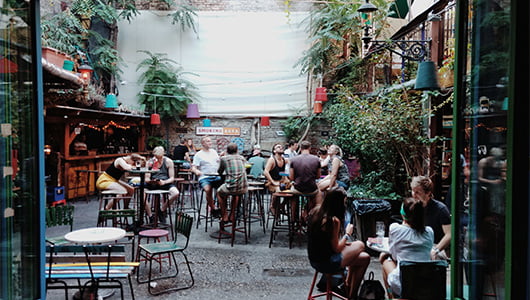
Hit a Ruin Bar
Many buildings were left ruined and abandoned after World War II. These have been turned into eclectic "ruin bars," where the outsides look like dilapidated ruins, but the sides are filled with a vibrant nightlife. Szimpla Kert and Fogashaz are two that are great to enjoy!
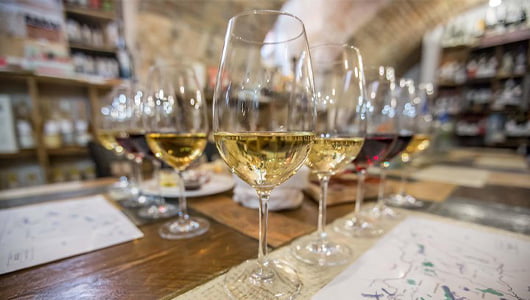
Go to a Hungarian Wine Tasting
Hungarian wine has a long history and a unique flavor profile. Try a local vintage or visit a wine bar for a wine-tasting experience.
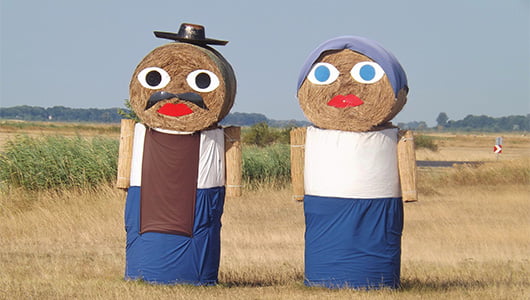
Go On A Day Trip
There are many fascinating locations just outside of the capital city, and if you are spending a decent length of time in Budapest, you'll enjoy a day away to explore these spots!
Danube Bend - This curve in the Danube River is where the castle town of Visegrad is located, as well as the beautiful Serbian village of Szentendre.
The Puszta - The Puszta region is part of the Great Hungarian Plain. This is where the ancient Magyar people grew their historic horse culture for over two thousand years. Large ranches there today keep this horsemanship alive.
Lake Balaton - A day trip to the largest freshwater lake in central Europe will be well spent. You can enjoy volcanic mountains, vineyards, thermal spas, and historic villages.

Go To A Sparty
Sparty is a thermal bath party, and you can find these parties at some of the city's famous thermal baths, such as Gellért Baths and Rudas Baths, and feature music, drinks, and often a lively atmosphere.
The parties usually take place in the evenings, and you are able to enjoy the baths' therapeutic waters while dancing and socializing. The events are popular among tourists and locals alike, and are a unique way to experience Budapest's famous thermal baths.
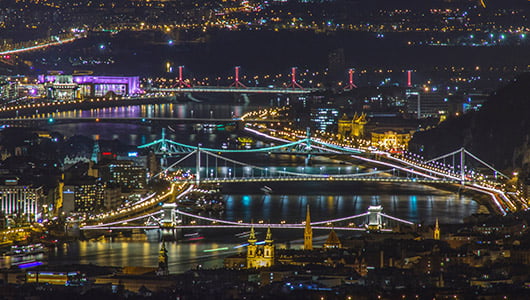
Go For A Night Walk
A night walk in Budapest, Hungary, can be a beautiful and magical experience. The city is renowned for its stunning architecture, including its stunning bridges and buildings that are illuminated at night. A walk along the Danube river at night offers stunning views of Buda Castle, Fisherman's Bastion, and the Hungarian Parliament Building, all of which are beautifully lit and offer an unforgettable sight.
Where To Stay In Budapest
Budapest is a popular location for backpackers, and so it's become almost famous for its hostels. Some hostels offer private rooms, and most have a kitchen available for you to use. Camping plots are available outside the city limits.
If you're not planning on backpacking, however, there are plenty of other, more traditional lodging options. Budapest is separated into 23 districts. To find lodging near the top tourist attractions, look for hotels or Airbnb's in districts I, V, VI, VII, and VIII. Districts I and V are in prime locations for visitors prioritizing museums and historical attractions. District VI is ritzy, nicknamed "the Beverly Hills of Budapest," and you'll see beautiful hotels in a Neo-Gothic style. District VIII is young and trendy and the perfect location if you plan on taking in the nightlife.
Where Is Budapest Located?
Budapest lies directly along the Danube River in Hungary. It consists of three towns (Buda, Obuda, and Pest) that grew into each other and were formally unified in 1873. Budapest connects the hills of western Hungary with the plains of eastern Hungary, with the Danube River flowing in the midst of it.
How To Get To Budapest, Hungary
Budapest is found in the very center of central Europe, so there are many ways to get there. The Budapest Ferenc Liszt International Airport is located about 10 miles from the city centre, and you can fly into the airport from multiple locations.
You can take a bus from the airport to downtown Budapest - the buses leave every 20 minutes. Many hotels also run shuttles to and from the airport, and this option is free but takes more time.
You can also get into Budapest through one of the three international railway stations. It may be more cost-effective to fly into a different large city nearby and take a train into Budapest.
Transportation Within Budapest
The public bus network in Budapest is expansive and easy to use! Pair this with the large streetcar network and the modern metro system, and public transportation with Budapest checks every box. Tickets can be purchased at any metro station, along with most newsstands and ticket vending machines. The tickets work on all of the buses, trams, trolleys, and the metro system. Although the ticket system is straightforward, you can avoid the hassle altogether by purchasing a 24-hour or 72-hour Budapest card or pass.
Three train stations in Budapest connect with other major Hungarian cities and main cities in neighboring countries. Two ferry services can take you across to the Danube River's opposite bank.
Budapest is a great city for biking, and bicycle rentals are readily available. Lime, Tier, and Bird are also available to rent through smartphone apps. However, there are restrictions as to where the scooter can be used. Certain areas and neighborhoods prohibit scooter-sharing services from operating, so check your route before using them.
Taxis are available but expensive and truly unnecessary, with all of the other transportation options available. Car rentals are affordable, but unless you're planning a day trip, there's no need to rent a car.
You can also use popular ride-sharing services in Budapest, Hungary, such as Bolt, Uber, and FreeNow. These services allow you to book a ride through their smartphone apps and can be cheaper than a taxi.
Golden Tips
Bring Comfortable Walking Shoes
Budapest has many cobblestone sidewalks and streets, so be sure to wear sturdy footwear.
Book In Advance
If you are visiting Budapest during prime travel season, making a reservation in advance is best to avoid any disappointment.
